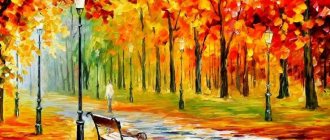The art of the people and their creativity invariably reflect their identity and spiritual wealth. One such widely known Russian folk craft is Gzhel. The unsurpassed art of filigree painting on clay products and the peculiarities of the design allow us to confidently call Gzhel the heritage of Russia. This folk craft with a long history is still very popular today. Gzhel not only pleases the eye with its unique and intricate ornamentation, but also immerses you in a mysterious and intriguing fairy-tale world.
History of Gzhel and its origins
The name of this folk craft is associated with the village of Gzhel, located in the Moscow region. This place is very picturesque, but not fertile. For a long time, the residents of this village tried to engage in agriculture. However, their time was wasted. All the failures were associated with a huge layer of white clay that lay almost on the surface. After it became known about the high quality of this clay and the fact that it makes excellent porcelain, a folk craft associated with the production of various pottery products was born. Local craftsmen created not only dishes, but also children's toys. The first pottery products of this area have been known since 1320.
Gradually, the original drawing, unique painting and amazing originality of Gzhel became very popular, and individual workshops merged into large productions.
There is an opinion that at first this folk craft was called “zhgel”, and then for ease of pronunciation they switched to the word “Gzhel”. The very name of the village meant “burn.”
History of Gzhel art
The origins of painting lie in an ancient region near Moscow, which was famous for its infertile soil. No matter how much the plowmen worked on it, Mother Earth did not please with a rich harvest. The reason was hidden in the fact that instead of black soil in this area there was a layer of high quality white clay.
The first discoverers of the deposit were pharmacists. To conduct experiments in the field of alchemy and create medicinal tinctures, they used dishes made from snow-white clay.
A little later, pottery production was established in Gzhel, which has been delighting people with beautiful products for more than four hundred years. The name of the village comes from the word “burn”. There is a version that the craft was originally called “zhgel”. Subsequently, for their own convenience, people swapped the letters and got “Gzhel”.
| However, according to archaeological excavations, at the beginning of the fourteenth century, in the area of the Gzhelka River, local craftsmen mastered pottery production. It was world famous Gzhel porcelain. |
The products were practical and of high quality. The region was first mentioned in chronicles dating back to 1320.
Beautiful nature, the expanse of fields, the splash of waves, the oak forest - all this inspired the inhabitants of Gzhel to practice art. Since ancient times, local craftsmen have glorified the small settlement with ceramic products. Moreover, they made not only cups and pots, but also tiles, tiles and children's toys.
Majolica
In 1724, on the road leading to Gzhel, Afanasy Grebenshchikov organized the first factory to create Zenin products. There is a version that they were received from China. The products were large porous majolica made from brightly colored enameled clay.
Potters from Gzhel delivered raw materials to the industrialist and at the same time created things at the factory, studying the rules of the technological process. Initially, the product range was meager. The factory specialized in the production of tobacco pipes and tiles. Then they began to create cutlery and small figurines.
In 1757, after the death of Grebenshchikov, there was a decline in production and by 1770 it completely ceased to exist. However, by this time Gzhel had already had its own craftsmen specializing in the production of majolica. Their products were in incredible demand.
All handicraft products can be roughly classified into three categories:
- Cheap dishes.
- Expensive vessels. They were used to decorate the table and interior.
- Small plastic art: animal figures and figurines depicting everyday scenes.
Beak-shaped jugs called kumgans were in greatest demand among consumers. Majolicas were painted with liquid enamel. First, the master outlined the outline of the picture using dark paints. Then the drawing was painted over with purple, red, green or blue.
The craft required craftsmen to paint a clear picture, since it was almost impossible to make adjustments to it in the future.
Semi-faience
At the beginning of the nineteenth century, majolica, which required serious financial investments, was replaced by semi-faience. The raw materials were based on Gzhel clay, combined with various impurities.
| The dye was applied to the fired product, covered with glaze on top and sent back to the oven. Initially, the painting was polychrome, later it was replaced with a blue tint. |
The main distinctive feature of Gzhel semi-faience is the contrast between the blue color and the snow-white background. Compared to majolica, the painting itself has undergone changes. Instead of a multi-colored outline, they began to practice drawing with a brush. Mostly floral and geometric patterns were used for decoration. Return to contents
Porcelain
The first porcelain products appeared at the beginning of the nineteenth century. Production was launched by Pavel Kulichkov in 1802. He delivered the finished goods to Moscow, where such products were a rarity. Many competitors tried to unravel the secret of Kulichkov’s success and find out the production technology.
Some residents of Gzhel succeeded in this, and soon several manufactories appeared on the territory of the settlement, producing high-quality porcelain products. Often, workshop owners bought blanks from Kulichkov’s factory, and then painted them under their own brand.
Nineteenth-century porcelain is characterized by an empirical style. The Gzhelians borrowed the forms characteristic of it, but interpreted it in their own way. In addition to cylindrical and egg-shaped items, craftsmen created crater-shaped cups with curved handles. The most popular ornaments are flowers and meanders.
Features of the Gzhel fishery
The difference between Gzhel and other folk crafts, which allows us to confidently call it a unique, distinctive, inimitable and original part of Russian artistic creativity, is the unusualness of the painting and, of course, handmade work. The main feature of Gzhel is a pattern in blue tones on a snow-white background and a pattern representing a complex floral pattern. Thanks to the contrast of cobalt paint and a white background, a unique brightness of color is created, which invariably attracts the eye and makes you admire the master’s work again and again.
In addition, the design is applied under the glaze and only then the product is fired. Cobalt is one of the few paints that can withstand oven temperatures of 1300 degrees.
Variety of Gzhel shapes
Gzhel products are distinguished not only by a huge variety of designs and original ornaments, but also by a wide selection of shapes.
The world of Gzhel is represented by such objects as:
• Tea pairs • Sets • Flower vases • Teapots • Sugar bowls • Jam sockets • Samovars • Souvenirs
A wonderful and unusual gift in addition to the above are: damask, plaque, kumgan.
Shtof is a tetrahedral-shaped vessel with a short neck and a stopper. In the old days it was used to store strong alcoholic beverages. The plaque, made using the Gzhel technique, is a painted decorative plate and serves as an excellent interior decoration. Kumgan is a vessel with a narrow neck, thin spout, handle and lid. Previously, it was used to wash hands and feet, and now, thanks to the masters of Gzhel, it is a wonderful and memorable gift.
Gzhel is also represented by a rich variety of souvenirs. Among them are figurines of animals, heroes of folk tales, snowmen, fish, nesting dolls, etc. Some of the products are dedicated to representatives of various professions, made in the form of the first leaf of a calendar, or have the shape of a bell.
Summary of a drawing lesson for middle group children. White and blue Gzhel
Synopsis of joint activities of children and teachers (OOD).
Visual activity (drawing) middle group. Topic: “White and blue Gzhel.”
Author: Alla Alekseevna Byrova, teacher of State Budgetary Educational Institution Secondary School No. 10 SPDS “Yagodka”, Zhigulevsk
Type of children's activity: fine arts (decorative drawing). Topic: “White and blue Gzhel”.
Goal : To develop children’s interest in folk crafts and develop children’s creative abilities. Integration of educational areas: Artistic and aesthetic development:
-Formate in children the ability to distinguish chromatic colors;
— To develop children’s ability to mix paints to obtain new shades; — To develop children’s ability to paint with a brush in different ways (“strokes”, “spots”); — To provide initial knowledge about the technique of drawing Gzhel patterns; — Give initial knowledge about shades of blue; -Develop compositional skills. Cognitive development:
-Formulate children’s ideas about folk crafts (Gzhel);
-Give initial knowledge about the Gzhel masters. Social and communicative development: -Develop children's interest in the works of Gzhel masters; — To develop children’s interest in visual arts. Physical development:
-Develop motor skills to music according to the text.
Materials and equipment. Stimulus material: -poem, video, “Master” badges. 2. Materials for children’s activities: Materials for presenting tasks and activity results: -colored cards. Materials for transformation and transformation: -matryoshka templates and pattern templates for each child. Materials for children's activities: -gouache, brushes, sippy cups, aprons, palette, easel, Whatman paper, PVA glue. 3.Didactic material: -video. 4. Equipment (technical support) for children’s activities: - projector, interactive board, tape recorder. Methods and techniques: 1.Reading fiction. A simple pattern Their shades are like fairy tales, White clay, porcelain - Attributes of a fairy tale. Like a child's hand On pieces of clay Painted blue pictures in three strokes. 2. Conversation. Questions for conversation: -Which painting will we use today? -What are the main colors in this painting? 3. Didactic game “Clap your hands.” 4. Reflection. Designer for joint activities between teacher and children.
Stage Motivational - target
Activities of the teacher: 1. Invites children to listen to the poem and answer the question “What kind of painting will we use?” Children's activities: 1. Listen, answer.
Stage Content-activity
Activities of the teacher: 1. Offers to answer the question what colors Gzhel masters use in their works.
Children's activities: 1. Answer. Teacher's activities: 2. Offers to play the didactic game “Clap Your Hands”, where children clap their hands when they see shades of blue. Children's activities: 2. Play. Activities of the teacher: 3. Offers to watch the video and answer the question: “How does the master apply a brush to the product?” Encourages children’s activity. Children's activities: 3. Watch, discuss, analyze Teacher's activities: 4. Offers to wear aprons to become real Gzhel masters. Children's activities: 4. Put on aprons. Activities of the teacher: 5. Shows the finished product. Children's activities: 5. Discuss, consider. Activities of the teacher: 6. Offers to move to the music Miracle - the birds flew in (wave their arms up) They flew to us from Gzhel (hands down) They sat down on the branches (sit down).
Children's activities: 6. Move to music and words. Activities of the teacher: 7. Suggests continuing the work: -circle the template along the contour. -draw a pattern with paint. 7.Children’s activities: Do the work independently. Evaluative and reflective.
Activities of the teacher: 1. Offers to place the finished nesting dolls on a poster. Children's activities: 1. Arrange their work. Activities of the teacher: 2. Offers to assign the “Master” badge to children and award them with memorable badges. Children's activities: 2. Come up one at a time, the rest clap their hands. Activities of the teacher: 3. Asks what you liked, what you remember. Children's activities: 3. Answer.
We recommend watching:
Outline of GCD for children of the middle group. Wild animals GCD outline for children of the middle group. My Homeland GCD outline for preschoolers of the middle group. Topic: Transport Summary of the GCD for children of the middle group “Geometric Kaleidoscope”
Similar articles:
Summary of lessons in kindergarten in the middle group. Profession rescuer
Summary of a lesson in kindergarten “Properties of wood.” Middle group
Lesson notes for the middle group of kindergarten
Lesson in the middle group of kindergarten. Professions of rural people
Lesson in the middle group on social and communicative development
Method of manufacturing Gzhel handicrafts
Creating products for Gzhel requires from the master extraordinary precision, painstakingness and an incredible flight of imagination. The dishes can be made of porcelain or majolica. The difference is that porcelain is white clay. It is more fragile and thin. Majolica is made from red clay and is more durable.
The entire manufacturing process can be divided into five stages. These include:
• Creation of a blank • Preparation for painting and first firing • Control and rejection of products • Painting • Second firing
The preparation process involves creating a porcelain or majolica mold from clay according to the artist’s sketches. This preparation is made on a pottery wheel, but not with your hands, but with special tongs. After the plaster mold is ready, liquid porcelain mass is poured into it, which gradually hardens. Gypsum absorbs moisture well, so porcelain hardens quickly.
An important feature of creating Gzhel is that all elements of the dishes, from handles to relief patterns, are made in different forms. This requires special care and attention from the master.
The next stage is preparation for painting. It includes polishing the product and firing it.
In order for the design to lie smoothly and neatly, each product is first cleaned with a special knife and polished. This process is carried out manually. Then the attachment points of various parts of the product are washed away, and the remaining irregularities are smoothed out using a foam roller. After this, the product is sent to the kiln for firing, which lasts about eight hours.
After firing, it is necessary to monitor the quality of the product and the presence of defects in it. They are identified using a fuchsin solution. This substance accumulates in the uneven surfaces of porcelain and turns bright red. Thus, unevenness or poor-quality joints in the product become visible. Next, imperfections are removed by roller sanding or washing. If the defect cannot be eliminated, the product is sent to scrap and melted down.
After this, painting begins. Each master has his own unique method of applying patterns and signs his work at the end. Then, the supporting parts of the product are treated with paraffin. To do this, the master manually dips the dishes into a bath of hot paraffin. Then, the product is dipped in glaze and sent for a second firing. It lasts quite a long time, eighteen hours. It is thanks to underglaze painting that the color saturation remains the same for a long time. Such products can be washed not only by hand, but also in the dishwasher.
Thus, each stage of the work is performed manually. Such work is very painstaking, therefore, mostly women work in Gzhel factories.
After firing, the product takes on its final form and is subject to subsequent packaging.
How to distinguish a genuine product from a fake
Gzhel dishes are a sign of quality. She is highly regarded in Russia and abroad. But there is still a risk of encountering a fake. As a rule, their quality leaves much to be desired, and ordinary paint is used to apply the pattern.
You can recognize original products by the following features:
- The surface of a ceramic or porcelain product is absolutely smooth. The background is snow-white.
- On the bottom of the item there is a brand name - a swan, or “Gzhel” is written in clear and large letters. The word should be circled in an oval.
- Expensive goods are marked with an o and the name of the craftsman.
- Real Gzhel is durable because it is made from white clay with the addition of quartz sand.
- The image is drawn in detail.
- The products have a simple shape, without unnecessary pretentiousness.
Features of Gzhel painting
The uniqueness, grace and incredible beauty of Gzhel products are given by the peculiarities of their painting. These include:
• Snow-white background • Deep blue pattern • Surface glazing • Diverse and complex floral patterns • Handmade
The use of only two colors and the uniqueness of the images make it possible to create unique masterpieces of folk art, therefore, there are no two identical products from Gzhel.
The pattern of the future product is first carefully thought out, and only after that is applied to the porcelain surface. Ancient masters applied the drawing immediately, without a preliminary sketch. They drew their inspiration from nature or from pictures of folk life. Painting is done with a solution of cobalt oxide, which after firing acquires a deep blue color. It is applied with special squirrel brushes.
There is another type of painting in the Gzhel style, which is called majolica. Its peculiarity is that not one color, but five, is applied to the snow-white surface.
Many centuries ago, Gzhel masters tried to reflect in their art their vision of the world around them, pictures of urban and rural life, inexplicable natural phenomena, their thoughts and fantasies. Based on this, the general style of painting can be divided into three main groups:
• Ornamental • Floral • Subject
The ornamental pattern is original, unusual and a certain association can be traced in it. The most common ornamental patterns are: drops, tendrils, blades of grass, pearls, combs. In addition, a checkered pattern is traditionally applied along the side and border, which is a chain of blue squares.
The plant pattern is considered classic for Gzhel. It is usually quite stylized, but you can always distinguish one plant from another. Most often, craftsmen depict berries, blades of grass, cuttings, and flowers on Gzhel products. Garlands of berries on porcelain can easily be intertwined with ears of wheat or a riot of floral patterns. At the same time, gooseberries can be easily distinguished from currants.
Often ornamental painting is combined with a floral pattern.
The plot drawing was one of the first to appear. It presented pictures from the life that surrounded the master. It could be beautiful landscapes, fun fairs, sleigh rides, colorful natural phenomena.
Modern masters of Gzhel
Thanks to the creative heritage left by the ancient masters of Gzhel, their modern followers were able not only to revive this great folk craft, but also to introduce into it notes of modern art, features of life and the originality of the views of the present time. At the end of the 19th century, modern Gzhel began to gain popularity, however, they painted mostly simple figures and the design was not as intricate as that of the ancient masters. Gradually, porcelain sculpture and decorative vases began to be mastered, and new original types were added to the traditional Gzhel pattern.
Thus, thanks to modern masters, there was a revival of Gzhel, it acquired new interesting techniques, exciting plots and a special style. Now these products are widely in demand all over the world and are an integral part of Russian folk art.
Gzhel was and remains an unsurpassed symbol of the enormous creative imagination and highest skill of the Russian people. This craft is a kind of history book, which carefully preserves the imprint of the time in which it was created, immerses us in a world full of incredible miracles and unique colors, and tells about how our ancestors lived. However, the popularity of Gzhel lies in the fact that it is capable of displaying pictures of modern times, helping people to look at themselves from the outside, to see how beautiful and amazing the world around them is.






